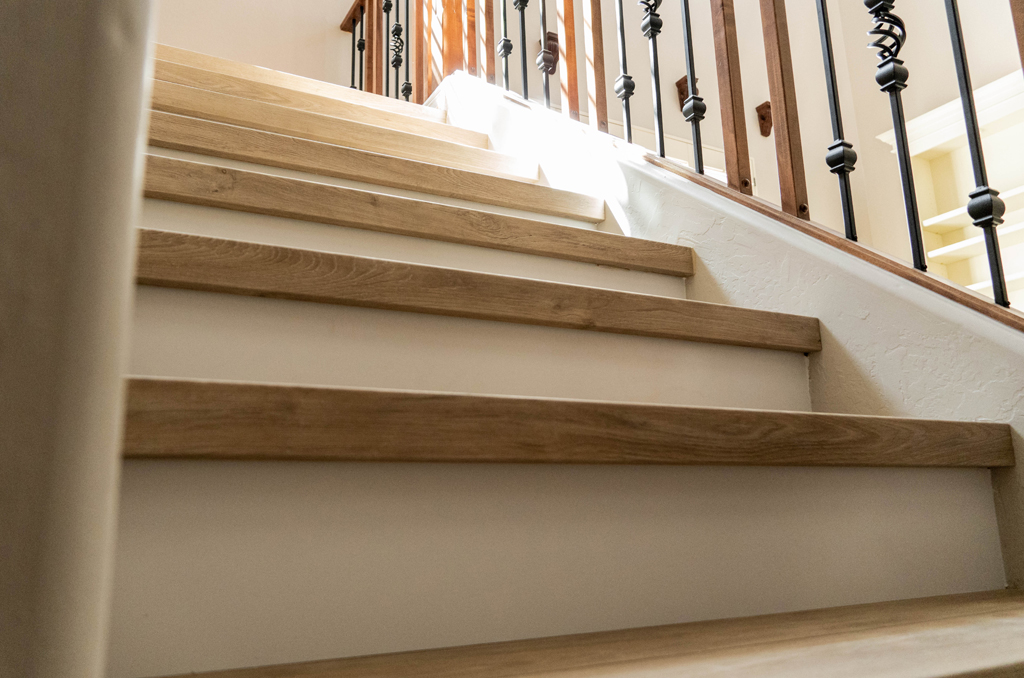While working on a remodeling project, it is crucial to consider the type of stairway, stair treads, and stair tread nosing to use, especially while designing or building a staircase. The type of stair treads and nosing used will alter the staircase’s appearance and may impact how safe it is to climb and descend the stairs.
What are Stair Nosings?
The stair tread is the horizontal portion of a staircase that you step on when going up or down the steps. The treads are often the greatest visible section of the staircase. So, the type of stair tread you select will significantly impact the staircase’s overall appearance. Numerous materials and designs for stair treads can be used to enhance the interior decor of the staircase and surrounding area.
Is Stair Nosing Necessary?
When constructing a space with stairs, staircase nosing should be considered from the aesthetic and safety perspective. They all have a distinctive style that might improve the overall look of your house or interior design. To walk up and down stairs, we often place our feet on the extreme edge of the stair tread, referred to as the staircase nosing. Well-placed staircase nosing can prevent general tread wear and tear and provide extra room for walking on each tread. The visibility of each tread could be increased with the help of an appropriate nosing, enhancing overall stair safety.
Are Stair Nosings Cost-Effective?
Steps are frequently the center of attention in an entrance area, and the most cost-effective approach to improve their appearance is by making a slight change in the stairs. Using floor and decor stair noses can benefit you as it is easily replaceable and available in various varieties and shades. Stair nosings are simple to install on current staircases, negating the need for time-consuming renovations or brand-new stairs. The nosing must be installed by fitting it over the existing stair and securing it in place.

What Type of Stair Nosing is Best?
There are several different sizes and styles of staircase nosing available nowadays. Some of the most typical shapes you may come across are as follows:
1. Pencil Round
As the name suggests, these nosing’s edges have rounded corners and no sharp edges, much like the sides of a pencil. Because of the lack of sharp edges, these are a safer solution for homes with children.
2. Square
While having an overall square appearance, this nosing has slightly rounded edges to guard against any harm.
3. Half-Round
A half-round stair tread nosing has a flat surface in the middle and a smooth, curved design at the stair edge. This design is frequently used in the landing, a further extension of the bottom stair.
4. Full-Round
The full-round nosing is a rounded, smooth curve that wraps around the edge of the stair nosing. Although it gives off an exquisite appearance, this is not as slip-safe as the other options for nosing and are frequently restricted to the landing.
Improving Safety with Stair Nosing
Maintaining a safe stairway is a simple method to lower accidents and injuries that might be serious, regardless of whether you live with an old person, kids, pets, or those who are prone to accidents. The installation of stair nosing is mainly done to make your steps safer. Stair nosing somewhat expands the surface area, which helps to lower the possibility of skipping a step or losing your balance while climbing or descending. Also, stair nosing makes each step more visible and offers climbers and descenders more confidence.
Step nosings shield steps from the markings and scratches that are a part of normal wear and tear. The flooring edge will deteriorate more quickly than the rest of the step and the actual floor if there is nothing to shield them, especially in commercial installations. By contacting Finishing Edge Technologies, you may have a Lifeproof stair nose fitted in almost any color, finish, size, and shape. Also, with them you can consistently obtain the ideal fit and color match. Additionally, you will be provided with a limited lifetime warranty for your LVP stair nose.








One Comment